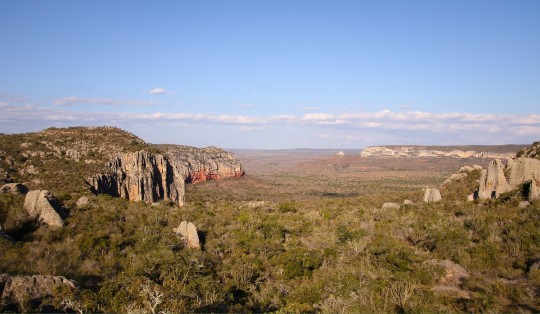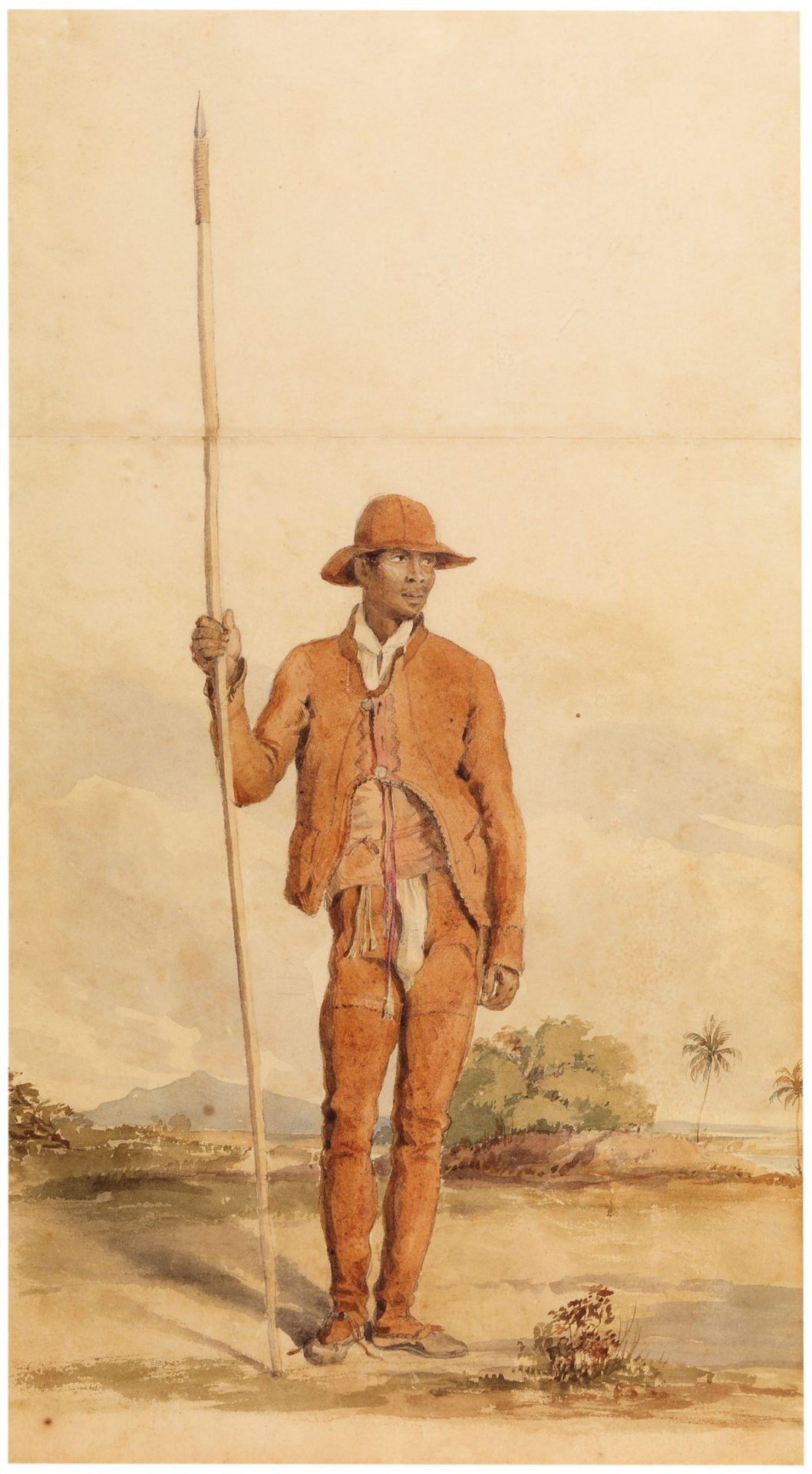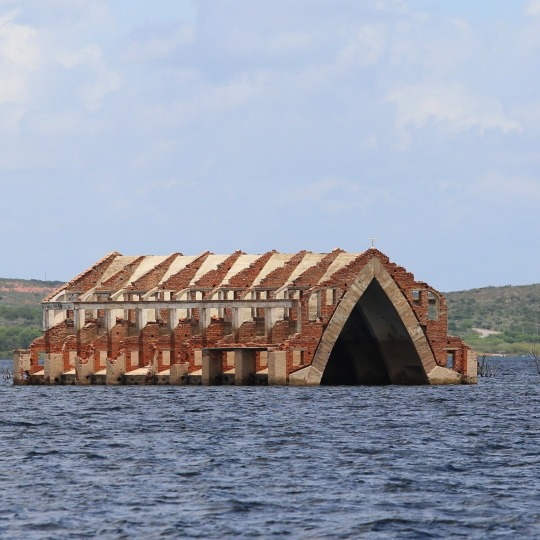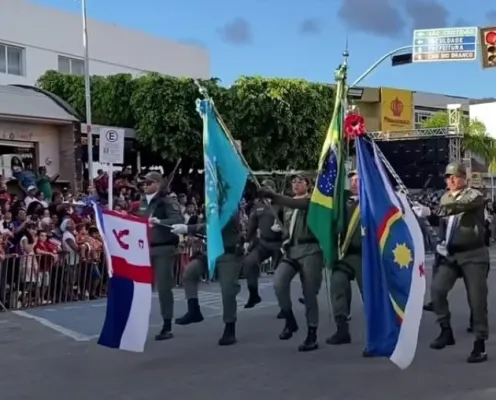#Sertão de Pernambuco
Explore tagged Tumblr posts
Text


Triunfo, Pernambuco
#registros#fotos#fotografias#fotografia#photography#triunfo#pernambuco#sertão de pernambuco#nordeste#brasil
19 notes
·
View notes
Text

Praça da Bandeira, Igreja Matriz de Nossa Senhora da Conceição - Cidade de Flores Pernambuco, Década de 1970.
#Flores PE#Cidade Flores#Sertão de Pernambuco#1970s#Pernambuco#Nordeste#Antigamente#Fotografia Antiga#efemérides#photography#photo#vintage#vintage photography#Old Photo#Old Photography#Interior#Pernambuco meu país#Flores City
9 notes
·
View notes
Text
Serra Talhada realiza eleição dos novos conselheiros tutelares
Neste domingo (01), a cidade de Serra Talhada, no Sertão Pernambucano, realizou a eleição para o Conselho Tutelar, responsável por zelar pelos direitos das crianças e adolescentes. Com a apuração de todas as 41 urnas, os resultados finais estão agora disponíveis. Aqui estão os candidatos e seus respectivos resultados: Maria Vanessa de Souza Bezerra – 764 votos Ericélia Leite da Silva Bezerra –…

View On WordPress
2 notes
·
View notes
Text

Gute Nachrichten
1.
Bewilligt. Der Antrag auf den nächsten Forsch- und Lehraufenthalt in Pernambuco ist von brasilianischer Seite aus bewilligt. Recife, minha cidade, ich komme zurück, schon 2024, vielleicht sogar für vier Wochen.
Strenges Programm! Zwei Sachen sind zu erledigen: Der Forschungsbericht ist zu übergeben, d.h. das Protokoll und die Kommentare zu dem Aufenthalt 2019. Dazu würde ich gerne, falls ich wirklich vier Wochen dort sein kann, jede Woche 90 Minuten vortragen mit anschließender Diskussion. Perspektiven einer Kulturtechnikforschung, die Bild- und Rechtswissenschaft sein soll, das ist etwas aufwendig, weil es doch für viele neu und ungewohnt ist und man etwas Zeit braucht, um von den rhetorischen Institutionen (die in in Recife Lehr- und Forschungsschwerpunkt sind) über juristische Institutionen (sei das jetzt Gaius oder ein aktueller Fall zum Privatrecht oder zu Menschen- und Grundrechten) zur Theorie der Kulturtechniken zu kommen.
2.
Dann will ich drei Sachen weitertreiben: ein Protokoll zu einem Forum auf der Insel Itamaraca (die Fotos wurden mir einmal gestohlen); eines zu dem Sumpf in Recife (sehr unsicher, ob und wie ich das mache) und eines zu einem Markt im Sertao, denn ins Sertao muss ich eh so oft und lange wie möglich.
Der Markt in Buique bietet sich als Rindermarkt an, einmal war ich schon kurz dabei. Pesquiera ist noch noch nicht ganz Sertao, das ist in einem kleinen, sanften und recht grünen Tal, das sich bei Arcoverde zum Sertão hin öffnet, dort liegt dann auch schon das Val Catimbau (oben im Bild) mit seinen mäandernden Tafelbergen und seinen Graphismen nahe, das ist bereits magische Zone.
Ich kann es noch nicht wirklich glauben, dass ich wieder nach Recife komme, vermutlich werde ich erstmal leicht weinerisch oder mild hysterisch geschüttelt, wenn ich lande und das irrisierte und irrisierende Licht, die chromatische Aberration um mich herum habe und dann sicher weiß, ich könnte jetzt in zwei verschieden fantastischen Hotel wohnen: dem altschicken Hotel Central ohne Klimaanlage aber mit Nachbarschaft zu dem Wohnhaus von Clarice Lispector oder aber in dem 1980-Hotel schlechthin, dem Atlante-Plaza, dem Hotel mit blauverspiegelter Fassade, Klimaanlage, Dachpool und Bar unter künstlichem Wasserfall, also in der Zeitmaschine, die einen in die Filmära zurückträgt, in der Pierre Richard und Gert Fröbe noch in gemeinsamen Filmen auftraten oder Typen wie Albert R. Broccoli Talente wie Lotte Lenya und Robert Shaw um sich sammelte, um ... James-Bond-Filme zu produzieren. Kicher! Das muss man sich mal vorstellen. Der ganze Aufwand für fröhlichen Neunzigminutenklimbim, mit dem man dann noch eine große Industrie finanzierte. Gab es alles mal, wird Tag für Tag unglaubhafter, aber manche Hotels in Recife erinnern daran, dass es mal Zeiten gab, in denen Heterogenität und Homogenität wie Fuchs und Hase 'Gute Nacht' sagten. Nix wie hin.
Das Hotel Central hat zwei Sterne, rational betrachtet ist das korrekt berechnet. Kostes darum nur ungefähr 30 Euro pro Nacht mit Frühstück. Das ist ein Witz, totaler Witz. Das Hotel ist eine Sehenswürdigkeit, ein Museum, ein Studierobjekt. Man sollte seine Phobien leicht in Unerschrockenheit übersetzen können, sonst wird es in der Nachbarschaft schnell rauh und ungemütlich. Die Nachbarschaft lebt nämlich, thut einem aber nix, wenn man ihr nix thut und immer genug Geld bereit hat, das man gerecht zu teilen bereit ist. Zivile Besteuerer und Zöllner können einem da mal schon begegnen, aber die begegnen einem auch hier. Der Vorteil des Central: Das war der erste sogenannte Hochaus von Recife, ist äußerlich geschickt renoviert, vermittelt etwas vom Glanz der dreißiger Jahre und man bekommt eine Sinn für die Maße und die Explosion der Maße. Keine Klimaanlage, auch das iste in Vorteil, weil man von der Luft und der Feuchtigkeit erfährt, ohne sie in den Standard globaler Industrieproduktion zu übersetzen. Der Körper merkt sich das schnell, Luft hat Dialekte und Akzente, Färbung und Modulierungen, und es lohnt sich, auch wenn man vermutlich am Anfang glaubt, dort keine Luft zu bekommen und niemals schlafen zu können. Es geht, man gewöhnt sich daran - und hat dann Erinnerungen, die man sonst nicht hätte, das dichtet ein bisschen am Lebenslauf.
21 notes
·
View notes
Photo

Sertantejo ou Vaqueiro do Sertão de Pernambuco, Charles Landseer
44 notes
·
View notes
Note
és de onde?
abc paulista mas faz 10 anos que moro em pernambuco (8 no sertão e 2 no litoral)
3 notes
·
View notes
Text
Aprendi a apoiar escritores independentes desde criança, quando saia com minha família, geralmente à praia aqui e Aracaju, e os cordelista passavam com o que eu chamava quando criança de cadernos coloridos (cordéis). Durante a semana, no final da tarde, minha mãe lia alguns para nós. Mais velha, fui morar no Sertão de Pernambuco, em Petrolina, minha família continua lá, e não era incomum encontrar em bares, restaurantes e feiras, poetas oferecendo seus livros.
4 notes
·
View notes
Text
Reflections on a Year of Reading Brazilian Literature 🇧🇷
Books Read This Year; Backlands: The Canudos Campaign by Euclides da Cunha, Macunaíma: The Hero With No Character by Mario de Andrade, Hippie by Paulo Coelho and Captains of the Sands by Jorge Amado
All throughout the year, my piece of Brazilian literature mostly focused on the northeastern part of Brazil. In Backlands, I explored the northeastern part of Brazil. With its dry, arid and empty lands, I learned of the mountains and sertões surrounding areas like the Bahia, Alagoas, Pernambuco, Ceara, Piauí and Maranhão. During the summer, the sertão is known for being so dry that even rain is impossible to get. Macunaíma mostly takes place in Brazil's beautiful, lush and dense rainforests with its main character, Macunaíma growing up and living there. Before he became the Hero With No Character, he was thrown away by his mother in a spacious clearing within the beautiful forest. Captains of the Sands takes place in the Bahia, specifically the capital, Salvador. Based on the fact that the Captains lived on a warehouse along the docks of Salvador, I learned that it was somewhat of a coastal city, with beautiful beaches and a lot of vendors surrounding it.
While reading these books, I learned a good amount of Brazilian history. For example, In Backlands, I learned about Antonio Conselheiro, a rebel that led one of the bloodiest uprisings in Brazil. Before this, his family was known as a dangerous family, killing several rich people and pillaging their fortunes. Conselheiro changed that when he decided to become a leader and try to help the northeast be free of southern rule. Macunaíma, however is slightly different. It is neither fully history nor truth, rather a mixture of both. Since almost all of the characters in the book are fake, the events that happen throughout the book are real and always tie in with Macunaíma and his brothers' escapades. Hippie takes place in the 70s and the 70s was a strange time for the world. While reading that book, I learned more about the hippie movement, especially about magic buses, buses that would travel entire continents to get their inebriated passengers to spiritual places like Nepal, for instance. Coelho and his new friend travel from Amsterdam to Kathmandu and on the way, they stop in Constantinople which is now know as Istanbul. I also learned that many. "hippies" were not dedicated to the lifestyle. They merely saw it as a trend and rolled on with the times. Many gave up and returned home to get real jobs and start families after they were done "exploring."
Brazil's culture is very rich and while Hippie doesn't strictly talk about it, Macunaíma does. Many of the adventures Macunaíma and his brothers go on inadvertently cause some shift in Brazilian culture. When Macunaíma first met Ci, the amazon queen of the forest and married her, she later on died and became a star and gave Macunaíma a talisman that was then taken from him and he embarks on a journey to find it. Later on in the book, Macunaíma travels to São Paulo where he attends a festival and talks about the Cruzeiro do Sul and how it is a god, not just a cluster of stars. Mainly, the first few chapters take many things from indigenous culture in Brazil. For example, the author, Mario De Andrade made Macunaíma's catchphrase, "Aí, que preguiça!" which is a fusion of Portuguese and the Tupi language. "Aí," means sloth in Tupi, whereas "preguiça" is the Portuguese word for sloth. This book was also published during Brazil's famous modernism movement. Some say it was one of the founding pieces of literature for the movement. It was published six years after the "Semana de Arte Moderna," and symbolized the beginning of the movement.
From Backlands: The Canudos Campaign, I learned that despite facing difficult odds, in life you must over come that adversity and keep moving on. While reading Macunaíma: The Hero With No Character, I learned that in life, your identity is fluid and it can change many times, so don't try to suppress or change it. In Hippie, I learned that in order to live life, you must embrace the unknown and challenge yourself. Take risks and learn before its too late. Finally, I Captains of the Sands, I learned that I should not let my circumstances dictate who I am or what I am going to be. In life, there will be people who put pressure and doubt your abilities because of where you are from and you shouldn't let that shake your worth.
Some things I learned about myself while reading these books is that I love Brazilian literature. It is incredibly abstract and different than English or American literature. Although some literary works may be difficult to comprehend (mostly because of translation), I think that reading books from a different country can change your previous perspective on a country, it sure changed mine. It made me want to learn more about Brazil and ignited a new flame for Brazilian literature. While I am not done with Captains of the Sands, I will continue to read it because its a well-written book full of humor and societal commentary. This is my OFFICIAL final blog post. Acabou, and muito obrigado. victoriasbrazilianlitblog, out!
Word count: 834
#hippie#brazilian literature#paulocoelho#macunaima#mariodeandrade#jorge amado#brazil#captainsofthesands#bahia
3 notes
·
View notes
Text
*Histórias Curiosas e Inusitadas*

Todos nós adoramos uma boa história, especialmente aquelas que são tão estranhas ou surpreendentes que nos deixam pensando "Como isso foi possível?" Histórias curiosas e inusitadas têm o poder de capturar nossa imaginação e nos transportar para mundos que nunca imaginaríamos. Hoje, vou compartilhar algumas dessas histórias que certamente farão você rir, se espantar e talvez até questionar a realidade.
Atlântica Brasileira
Petrolândia é uma cidade localizada no estado de Pernambuco, no Brasil. Ela foi fundada em 1938, durante o governo de Getúlio Vargas. Originalmente, a região era habitada por índios da tribo Truká. Com a construção da barragem de Itaparica na década de 1980, a cidade foi inundada e teve que ser reconstruída em uma área mais alta, onde está localizada atualmente. Petrolândia é conhecida pela sua produção agrícola, pesca e, claro, pela energia hidrelétrica gerada pela barragem.
Com pouco mais de 36,9 mil habitantes, a cidade de Petrolândia, no Sertão de Pernambuco, é conhecida pelos atrativos turísticos e ficou popularmente conhecida como "Atlântida Brasileira". O município, que fica a mais de 400 quilômetros de distância da capital, Recife, recebeu este nome porque foi inundada em 1988.
A inundação foi provocada pela construção da Usina Hidrelétrica Luiz Gonzaga. A situação fez com que os moradores saíssem das casas, abandonassem o comércio e todas as construções que atualmente estão submersas pela água no município sertanejo.
Descubra mais sobre Nova Petrolândia: Assista ao Nosso Vídeo Exclusivo!
Obrigado por nos acompanhar nesta jornada através de Nova Petrolândia! Esperamos que você tenha desfrutado desta viagem virtual pela beleza e encanto desta cidade única.
Clique no link abaixo e deixe-se levar por essa experiência visual única. E não se esqueça de compartilhar com seus amigos e familiares para que eles também possam se apaixonar por este destino encantador!
Assista ao vídeo aqui: https://vm.tiktok.com/ZMMwbsMpx/
3 notes
·
View notes
Text
Caso Ingridy Vitória: Polícia encontra corpo de menina que foi sequestrada no Sertão
As buscas pela menina Ingridy Vitória, de 13 anos, chegaram ao fim na tarde deste sábado (29). A garota, que foi sequestrada na terça-feira (25), teve seu corpo encontrado próximo à pista do distrito de Caraíbas, na zona rural de Santa Maria da Boa Vista, Sertão de Pernambuco. A informação foi confirmada pela Secretaria de Defesa Social de Pernambuco (SDS). A jovem foi sequestrada durante uma…
0 notes
Text
João Pernambuco volta ao Municipal na voz de Glaucia Nasser
No dia 6 de abril, o violonista João Pernambuco (1883-1947), um dos primeiros compositores a escrever para violão solo no país, será homenageado pela cantora mineira Glaucia Nasser. Produzido e interpretado pela cantora mineira, “João Pernambuco – Coração do Violão” será apresentado no mesmo palco onde o compositor de “Luar do Sertão” se apresentou em dezembro de 1915 a convite do escritor Afonso…
0 notes
Text


Pico do Papagaio | Triunfo, Pernambuco
22 notes
·
View notes
Text

Vista Parcial da Cidade de Petrolina Pernambuco, Sertão do São Francisco - Década de 1960.
#pernambuco#nordeste#Petrolina City#Petrolina PE#vintage#vintage photography#1960s#photography#photo#efemérides#Antigamente#fotografia antiga#foto antiga#Fotografia#old photography#Petrolina Antigamente
9 notes
·
View notes
Text
Prefeitura de Arcoverde celebra 95 anos de emancipação política
Na tarde desta segunda-feira (11), a Prefeitura de Arcoverde promoveu, através da Secretaria de Educação, mais uma exitosa organização do Desfile Cívico, comemorando 95 anos de emancipação política da cidade. A iniciativa agregou a participação de 20 escolas, órgãos públicos e entidades convidadas, tendo como ponto de apoteose dos cortejos a Praça da Bandeira, no centro da cidade, onde o público…

View On WordPress
#Arcoverde#Blog Nill Jr#Desfile cívico#Destaque#Emancipação Política#prefeitura de Arcoverde- PE#Sertão de Pernambuco
2 notes
·
View notes
Text

História e teoria de uma lei inconstante e polar
Die Gegend, wie jede Gegend, ist ein Raum mit Zeit. Gegenden bringen jeweils spezielle Denkräume hervor. Die Gegend hier, also Recife/ Pernambuco/ Nordost ist magisch und wird noch magischer, vor allem ab dem sogenannten Tor zum Sertão, ab Arcoverde.
Heute morgen fällt im Foyer des Hotel Central mein Blick auf eine monumentale Hand, die gehört dem, der mir dort gegenüber sitzt. Noch bevor ich den Blick von der Hand abwenden und zum Gesicht wenden kann denke ich: nanu, den kenne ich doch. Es ist erstens unwahrscheinlich, dass ich ihn kenne, zweitens, dass ich ihn hier wiedererkenne. Und ich kenne ihn doch, und ich erkenne ihn doch wieder: Mestre Assis Calisto aus Arcoverde. Die Hand reicht. Beide Hände sind monumental, das ist im Sertão wiederum wahrscheinlich, nicht nur bei den Nachfahren derjenigen, die als Sklaven hierhin geschifft wurden. Man ackert dort eben, große Hände zu haben ist dort wahrscheinlicher als große Augen zu machen. Warum hast du so große Hände? (Grimm). Nicht nur seine Hände sind monumental, auch seine Füße, aber die anderen Organe des Wesens, das nach Thomas Hobbes anderen Wesen ein Wolf sein soll, die sind glücklicherweise nicht so groß. Fressen könnte er mich, wir sind schließlich in anthropofagischer Gegend. Wird er aber nicht.
Assis Calisto kenne ich, seitdem ich ihn vor 5 Jahren einmal gemeinsam mit meinen beiden Cicerones Bruno und Ana Maria im Sertão am Straßenrand aufgelesen habe, denn wo nur einer oder nur eins ,(auf-)gelesen wird, da ist uma lei, ein Gesetz. Er machte Anhalter, wir nahmen ihn mit, Ana Maria erkannte ihn aber auch gleich. Ein Mestre meistert die Magie der Gegend, das ist sein Beruf. Er hat dabei das, was Aby Warburg hat: einen hohen Berufsbezeichnungsverbrauch. Man kann es sich einfach machen und Mestre Assis als Berater, Künstler, Verwalter, Priester oder Musiker bezeichnen. Er ist Teil der Formation Coco Raizes (wie in Raizes do Brasil). Magische Gegenden sind dichte Gegenden, so dicht, dass ihre Betrachtung manchmal auch pathologisch erscheint: thick and sick. Magische Gegenden begünstigen paranoide Blicke, weil es hier leicht fällt, alles mit allem zu verbinden, was allerdings nur daran liegt, dass hier alles von allem getrennt ist und dennoch die Austauschmanöver tanzen. Man meint hier, alles meine einen. Klar treffe ich Mestre Calisto Assis im Foyer wieder, was denn sonst?
Das war ein unverhofftes, aber auch fröhliches Wiedersehen, also eine Kalendergeschichte. In Gegenden mit unbeständig-polaren Rechten und Gesetzen sind Zeitmessungen, Zeitverwaltungen, Bewegungsmesser und Bewegungsverwalter besonders wichtig. Mestre (das ist Meister/ Messer) Assis Calisto ist einer davon. Mit dem hohen Berufsbezeichnungsverbrauch, den er hat, macht das den Kohl auch nicht mehr fett: er ist ein Regisseur/Regent.
1 note
·
View note
Text

Dois importantes casais, que também fizeram história no sertão. O Cristino Gomes da Silva Cleto, conhecido como o Diabo Louro ou Corisco, era de Alagoas. A Sérgia Ribeiro da Silva, a Dadá, era de Pernambuco.
Olha que interessante, o Corisco ensinou a Dadá ler, escrever e usar armas. Segundo a pesquisa virtual, juntos tiveram sete filhos, que eram ocultamente deixados em casas de parentes para serem criados. Destes, apenas três sobreviveram. O bando de Lampião dividia-se, como forma de defesa, em partes menores, a mais importante delas era justamente a chefiada por Corisco.
Viva os ícones do nordeste brasileiro!
Viva o dia universal da mulher!
Linguagem arte digital @operariocultural
#arte #dadáecorisco #cangaço #art #nordeste #brasil
0 notes